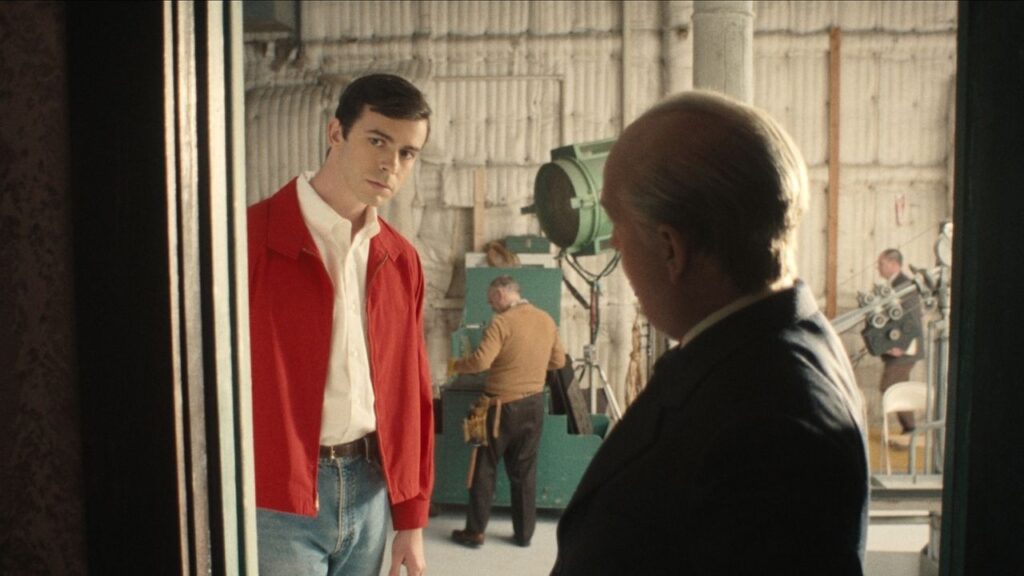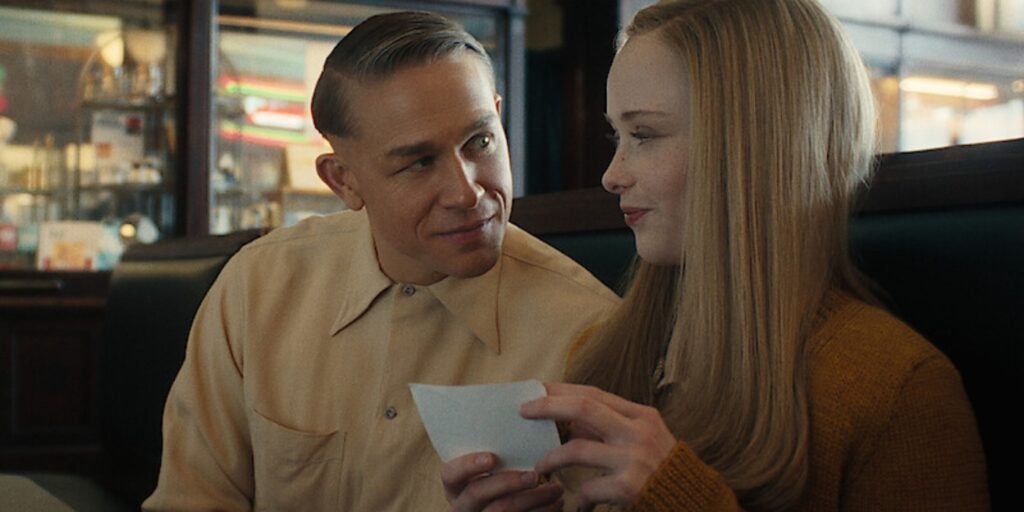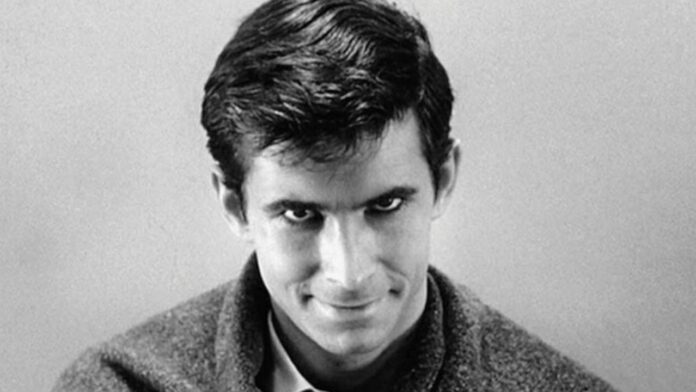Episode 3 of ‘Monster: The Ed Gein Story‘ delivers one of the show’s most intriguing moments. Alfred Hitchcock sits across Anthony Perkins and tells him he must play Norman Bates, inspired by Gein because he’s “like him.” As the scene gets wrapped up, we all have one question in mind: What exactly did Hitchcock see in Perkins?
Was he comparing him to Ed Gein, the real-life killer in ‘Psycho‘? Or was he hinting at something far more personal?
Netflix’s ‘Monster’ Digs Up Anthony Perkins’ Secret And ‘Psycho’ Casting

That single moment between Hitchcock and Perkins becomes the emotional core of the episode in ‘Monster‘. Because in real life, Anthony Perkins did carry a secret. In 1950s Hollywood, being gay meant living behind a mask. And, Perkins’ charm, his shyness, his “boy-next-door” image, all of it hid who he really was.
Related: Love Story Or Lie? Mystery Of Ed Gein’s Alleged Sweetheart Adeline Watkins Explained
Hitchcock was always fascinated by the real-life story of Ed Gein, the mild man who was no less than a monster. In Perkins, Hitchcock found a face that could hold all that: the politeness, the repression, the sweetness, yet very scary. But ‘Monster‘ pushes this idea further.
Back then, Perkins was already leading a double life. His long relationship with fellow actor Tab Hunter had to be kept buried under studio control and public pressure. And that’s where the connection to Norman Bates starts to feel unsettlingly real. Both men lived double lives. Both smiled through repression. And both were defined by what they couldn’t show the world.
Maybe Hitchcock saw that. Maybe that’s why Perkins’ Norman felt so painfully human because, on some level, he wasn’t just playing the part. But Hitchcock’s genius came with a price. It changed cinema, and it changed Anthony Perkins forever.
How Alfred Hitchcock Tied Anthony Perkins To Ed Gein

The other half of the episode brings us back to the man who started it all, Ed Gein. He charms his way out of suspicion for Mary Hogan’s murder, wins back Adeline Watkins, and even convinces her to marry him, using a ring stolen from a corpse. Adeline moves in, cleans up his decaying house, and in a moment of horrifying irony, lands him a babysitting job.
In case you missed it: Top 15 Cult Classic Films That Were Box-Office Disasters
It’s absurd and grotesque, and yet, ‘Monster‘ shows that Ed doesn’t fully understand his own evil. In fact, he drifts between normal life and madness as if they’re one and the same.
As the episode layers Hitchcock’s vision, Perkins’ repression, and Gein’s delusion, it becomes clear; they’re all mirrors of each other. Gein hid his crimes. Perkins hid his sexual truth. Hitchcock saw both, and turned that darkness into art. Maybe that’s why it feels so real. Because, for everyone involved, it was real.
After the release, Perkins couldn’t escape Norman Bates. Casting agents sent him roles that felt like carbon copies. Fans called him “Norman” as if Hollywood had decided who he was, both on screen and off. Even in his personal life, the shadow of Norman followed him. The episode shows how fame, identity, and repression are twisted together, and how being too good at embodying horror could destroy the man behind it.
We’ll never know if there is historical accuracy here. Was Hitchcock just talking about acting, or if he meant something more? But the scariest part of it will always be what might have been hidden behind the screens.





